Fellowships
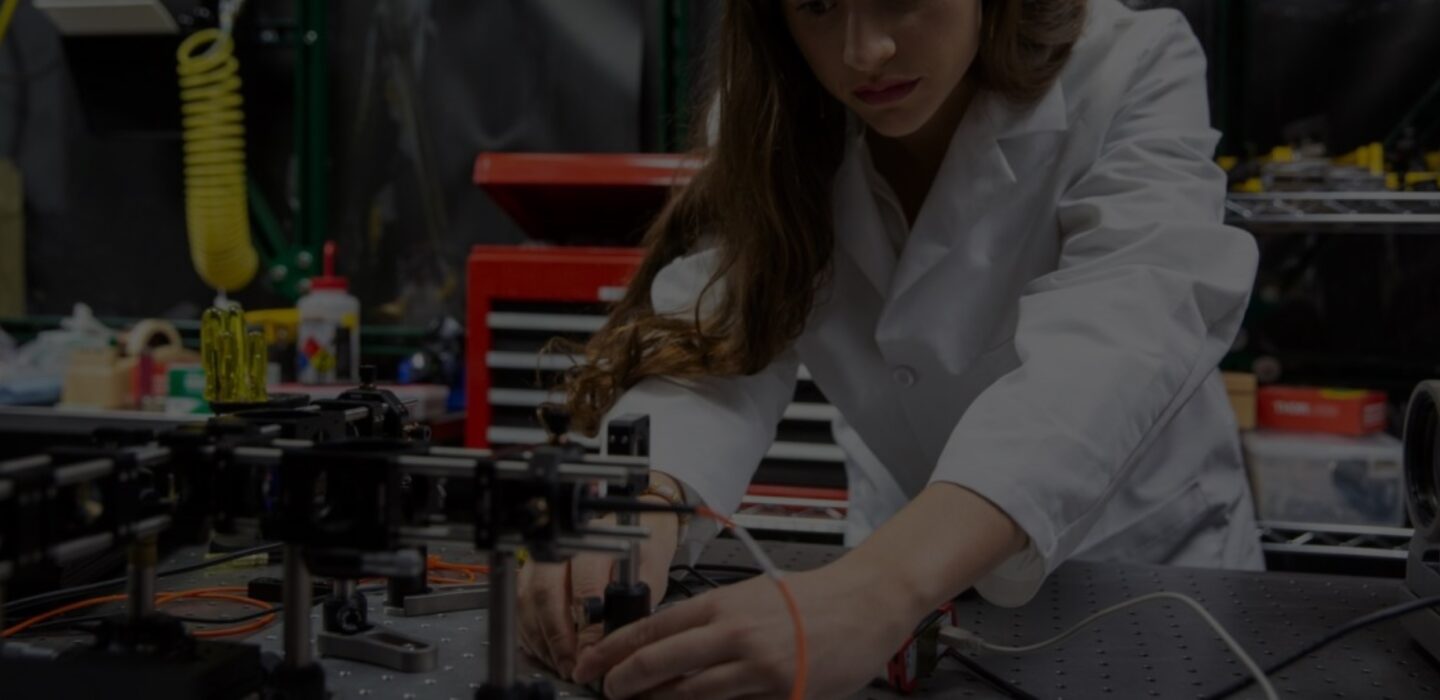
In addition to internal fellowships (Kavli, Pappalardo, Torres), we are happy to host postdoctoral fellows supported by national and international programs. If you are interested in bringing a fellowship to MKI, please send a copy of the sponsor’s announcement along with your research proposal to Jack Defandorf and Kelley Mahoney.
MKI has established a high-profile postdoctoral fellowship program for research in exoplanets, gravitational wave science, X-Ray astronomy, cosmology, Optical/IR Astronomy, or other topics in the broadly defined area of astrophysics and space research. MKI postdoctoral fellowships offer independence, generous stipends and resources, access to a variety of ground-based and space-based observatories, and the opportunity to collaborate with faculty, research scientists, and engineers. MKI postdoctoral fellowships are awarded for three years, and offer health insurance as well as stipend. Fellowship solicitations are posted in Academic Jobs Online.
MKI invites applications for the MIT Kavli Postdoctoral Fellowship in Astrophysics. The appointment will be made to an outstanding researcher displaying significant promise in any are of astrophysics, including theory, observation, or instrumentation, and embodying core values of inclusion and belonging. Application deadline is 12/09/2024.
Current
Kenzie Nimmo (October 2022 – present)
Past

Hsin-Yu Chen (September 2023 – January 2023)
Hsin-Yu is currently a NASA Einstein-MKI Fellow. Before coming to MIT in September 2020, she was a Black Hole Initiative Fellow at Harvard University. Hsin-Yu received her PhD from the Department of Astronomy and Astrophysics, University of Chicago. Hsin-Yu’s research interest is in gravitational-wave astrophysics and cosmology. She’s a member of the LIGO Scientific Collaboration and the LISA Consortium. With Advanced LIGO-Virgo’s gravitational-wave detection of compact binary mergers, she is trying to answer the question of how old the Universe is—one of the biggest mysteries in cosmology. In addition, Hsin-Yu is helping to capture electromagnetic signals from the LIGO-Virgo’s binary mergers, so that the joint detections can shed light on the origin of the heavy elements in the Universe. Finally, the mergers of neutron stars observed by LIGO-Virgo will teach us how matter behaves at low-temperature and high-density environments—another question Hsin-Yu is trying to study.
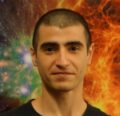
Juan Mena-Parra (September 2018 – September 2022)
Juan studied Electrical Engineering at Universidad de Antioquia (Colombia) before moving to Canada to study Honors Mathematics and Physics at McGill University. He obtained his PhD in Physics from McGill University in 2018. Juan is an observational cosmologist who designs and builds novel instrumentation to improve the understanding of the origin, composition and evolution of the Universe. Juan is part of the team that designed, commissioned, and now operates the digital correlator for the CHIME telescope (Canadian Hydrogen Intensity Mapping Experiment). In Fall 2022, Dr. Mena-Parra joined the faculty at the University of Toronto as an assistant professor in the Dunlap Institute and the David A. Dunlap Department of Astronomy and Astrophysics.
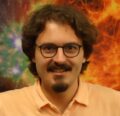
Tansu Daylan (June 2018 – May 2022)
Dr. Tansu Daylan is currently an associate research scholar and an LSSTC Catalyst Fellow in the Department of Astrophysical Sciences at Princeton University. He works on the discovery, characterization, and demographics of exoplanets as a probe of planet formation and evolution as well as on searching for astrophysical signatures of dark matter and its structure at sub-galactic scales. His research involves development of fast, accurate, and scalable astro statistical methods including convolutional autoencoders and Bayesian inference via trans dimensional sampling also known as probabilistic cataloging.
In Fall 2023, Dr. Tansu Daylan joined the faculty at Washington University in St. Louis as an assistant professor of physics. He holds a double major in electrical and electronics engineering and physics from METU, Turkey, and as an undergraduate, worked on cosmic ray detection as a member of the AMS-02 collaboration at CERN. He received his PhD in physics from Harvard University in 2018, where he characterized the gamma-ray emission from the inner Milky Way to show its consistency with the products expected from the self-annihilation of weakly interacting massive particles (WIMPs).
Following his PhD, he became a Kavli Fellow at MIT Kavli Institute and has since worked on various aspects of the TESS Mission including the extraction of light curves from the full-frame images, the TESS Objects of Interest process, the spectroscopic follow-up of detected exoplanet candidates, and characterization of exo-atmospheres. He became a TESS Postdoctoral Associate in 2021. His work on TESS enabled the discovery of more than five thousand planet candidates and some of the prime discoveries of the TESS Mission such as the TOI-1233 multiplanetary system with an exceptionally bright host star. During his postdoc at MIT, he also served as the Human Affairs Chair (2019-2020) and the President (2020-2021) of the MIT Postdoctoral Association.

Denis Martynov (September 2015 – January 2018)
Denis obtained his M.S. from Moscow Institute of Physics and Technology in mathematical physics. His first research projects included simulations of gas flows in micro-scale devices. Denis received his PhD in instrumental science at the California Institute of Technology in the LIGO laboratory in 2015. Denis is currently a Senior Lecturer in the School of Physics and Astronomy at the University of Birmingham UK where he works on the design of the future gravitational-wave instruments.

Kevin Schlaufman (August 2012 – August 2015)
Kevin was the inaugural MIT-Kavli Postdoctoral Fellow. Kevin is a theoretically-oriented observational astronomer working at the intersection of Galactic astronomy and exoplanets. He received his PhD in Astronomy and Astrophysics from University of California, Santa Cruz in 2011. Before coming to MKI in August 2012, Kevin spent a year as a Senior Data Scientist at LinkedIn Corporation. Following his three years at MKI, Kevin was a Carnegie-Princeton Fellow, Carnegie Observatories and Princeton University, from 2015-2016. Kevin is currently Assistant Professor, Rowland Department of Physics and Astronomy, Johns Hopkins University.
Future
-----
Current
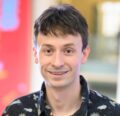
Kevin Burdge, Pappalardo Fellow in Physics (2021-2024)
Kevin Burdge’s interests lie in discovering and characterizing astrophysical sources of both gravitational and electromagnetic radiation, especially those detectable by the upcoming space-based gravitational wave detector, the Laser Interferometer Space Antenna (LISA). These sources are Galactic binary systems with orbital periods of less than an hour, and consist of two compact objects–generally a white dwarf with either a white dwarf, neutron star, or black hole companion. LISA is expected to detect tens of thousands of such binaries within the Milky Way, and Burdge’s work focuses on leveraging data from current and upcoming wide-field optical surveys such as the Zwicky Transient Facility, the Transiting Exoplanet Survey Satellite (TESS), and the Vera Rubin Observatory to discover and precisely constrain the physical parameters of these objects using the photons they emit. So far, Burdge has doubled the number of known examples of LISA-detectable binaries in the span of two years using the Zwicky Transient Facility, including the two shortest orbital period eclipsing binary systems known, and he has measured general relativistic orbital decay in several of these systems.Short period binaries hosting two compact objects can be used to perform novel tests of General Relativity, precisely constrain the equation of state of objects such as white dwarfs, and study the processes of binary evolution which produce these systems. Many of these binaries are double white dwarf pairs predicted to produce a Type Ia supernova upon merger, a type of explosion which allowed for the measurement of the accelerating expansion of the universe.
Past
Nicholas Kern, Pappalardo Fellow in Physics (2020-2023)
Steven Villanueva, MIT Pappalardo Fellow in Physics (2018-2021)
Anna-Christina Eilers, Pappalardo Fellow in Physics (2022-2024)
Carl Rodriguez, MIT Pappalardo Fellow in Physics (2016-2019)
Robert Penna, MIT Pappalardo Fellow in Physics (2013-2016)
Meng Su, MIT Pappalardo Fellow in Physics (2012-2015)
Laura Lopez, MIT Pappalardo Fellow in Physics (2011-2014)
Simona Vegetti, MIT Pappalardo Fellow in Physics (2010-2013)
Mustafa Amin, MIT Pappalardo Fellow in Physics (2008-2011)
James Battat, MIT Pappalardo Fellow in Physics (2008-2011)
Nitya Kallivayalil, MIT Pappalardo Fellow in Physics (2007-2010)
Paola Rebusco, MIT Pappalardo Fellow in Physics (2007-2010)
David Kaplan, MIT Pappalardo Fellow in Physics (2004-2007)
Benjamin Lane, MIT Pappalardo Fellow in Physics (2003-2006)
Robert Simcoe, MIT Pappalardo Fellow in Physics (2003-2006)
Katherine Rawlins, MIT Pappalardo Fellow (2003-2005)
Future
Rohan Naidu, Pappalardo Fellow in Physics (2025-2027)
Juliana Garcia-Mejia, Pappalardo Fellow in Physics (2026-2028)
The Torres Postdoctoral Fellowships are supported by a generous donation from Juan Carlos Torres '79, and are awarded through a competitive process for the study of astrophysics, with a preference for candidates studying exoplanets.
Current
Emily Pass, (2024 - )
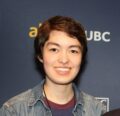
Michelle Kunimoto (2023-2024)
PH.D., UNIVERSITY OF BRITISH COLUMBIA, 2020
B.SC., UNIVERSITY OF BRITISH COLUMBIA, 2016
Michelle specializes in exoplanet detection, characterization, and demographics. She is particularly interested in improving automated vetting pipelines for distinguishing planets from false positives, as well as developing new statistical frameworks to estimate exoplanet occurrence rates and constrain planet formation and evolution theory. For her PhD, she developed an independent pipeline to search archival Kepler data for new exoplanets, and estimated occurrence rates including the abundance of potentially habitable planets around Sun-like stars. She came to MIT as a postdoctoral associate working on the TESS mission, where she led MIT’s Quick-Look Pipeline team and discovered thousands of new planet candidates. She also established the TESS Faint Star Search, which has independently found thousands more planet candidates including many of the only giant planets orbiting M dwarfs confirmed so far. Beyond planet detection, her TESS postdoctoral work involved the confirmation and characterization of multiple planetary systems including TOI-4010 and TOI-4599, predictions for the future TESS exoplanet yield, and improved estimates of hot Jupiter occurrence rates around diverse stellar populations. Starting in 2024, Michelle will be an Assistant Professor in the Physics and Astronomy department at the University of British Columbia.
Past
Maximilian Guenther, (2018 - 2021)
Xu 'Chelsea' Huang, (2017-2021)
Jennifer Burt, (2016-2019)
Sarah Ballard, (2015-2019)
Zachary Berta-Thompson, (2013-2016)
NASA Hubble Fellowships (Hubble, Einstein, and Sagan) Announcement of Opportunity is available here.
Current

Rohan Naidu, NASA Hubble Fellow (2022-2025)
Rohan Naidu is broadly interested in the first galaxies that formed after the Big Bang. His research addresses when these galaxies emerged to illuminate the universe, how they ionized the intergalactic reservoirs of hydrogen, and how they synthesized the elements that would one day seed life on Earth. Rohan pursues these galaxies with a near-and-far approach. As one of the first users of NASA’s James Webb Space Telescope, he is leading direct studies of galaxies at the highest redshifts. And through archaeological studies of our own galaxy, aided by ESA’s Gaia satellite, he has excavated some of the most ancient systems that lie buried within the Milky Way.

Riccardo Arcodia, NASA Postdoctoral Fellow (2022-2025)
Riccardo Arcodia’s research focuses on studying transient and persistent accretion events onto black holes of different masses, from X-ray and optically bright active supermassive black holes to massive black holes in low-mass galaxies, down to stellar-mass black holes. He significantly contributed to the discovery and study of a new rare outlier in the family of extragalactic X-ray transients, the so-called quasi-periodic eruptions, using the eROSITA X-ray telescope and several other facilities. He is now at the forefront of the efforts to study their X-ray and multi-wavelength properties, in an attempt to unveil more about their origin.
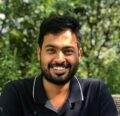
Kishalay De, NASA Einstein Postdoctoral Fellow (2021-present)
Kishalay De’s research interests lie in the transient optical/infrared sky to search for cataclysmic explosions in the Milky Way and in distant galaxies. He obtained his PhD from the California Institute of Technology in 2021, where he worked on building the largest volume-limited sample of supernovae using the Zwicky Transient Facility (ZTF) survey to search for faint thermonuclear and core-collapse supernovae. His work led to the identification of new classes of explosions arising from helium shell detonations on white dwarfs and the deaths of extremely stripped massive stars. De helped build the first wide-field infrared time domain survey, Gattini-IR at Palomar Observatory, that surveys three quarters of the sky every two nights. By looking in the near-infrared, De’s work revealed a population of dust obscured eruptions (novae, X-ray binaries, microlensing events and young stars) that are missed in optical surveys. De is currently working on systematic searches for neutron stars and black holes in the Milky Way via variable and erupting optical/infrared counterparts of Galactic X-ray sources, using time domain surveys like ZTF, Gattini-IR, WINTER and in the future, with the Vera Rubin observatory and the Nancy Grace Roman space telescope.
Past
Nicholas Kern, NASA Hubble Postdoctoral Fellow (2023-2026)
Anna-Christina Eilers, NASA Hubble Postdoctoral Fellow (2022-2024)
Aaron Smith, NASA Einstein Postdoctoral Fellow (2018-2022)
Hsin-Yu Chen, NASA Einstein Postdoctoral Fellow (2020-2023)
Maximiliano Isi, NASA Einstein Postdoctoral Fellow (2018-2021)
Michael McDonald, NASA Hubble Postdoctoral Fellow
Dheeraj (DJ) Pasham, NASA Einstein Postdoctoral Fellow (2016-2019)
Diana Dragomir, NASA Hubble Postdoctoral Fellow (2016-2019)
Paul Torrey, NASA Hubble Postdoctoral Fellow (2016-2018)
Rongmon Bordoloi, NASA Hubble Postdoctoral Fellow (2015-2018)
Jack Steiner, NASA Einstein Postdoctoral Fellow (2015-2018)
Joey Neilsen, NASA Hubble Postdoctoral Fellow (2014-2017)
Aleksander Sadowski, NASA Einstein Postdoctoral Fellow (2014-2017)
Meng Su, NASA Einstein Postdoctoral Fellow (2012-2015)
Hsiao-Wen Chen, NASA Hubble Postdoctoral Fellow (2002-2005)
Elena Gallo, NASA Hubble Postdoctoral Fellow
Bryan Gaensler, NASA Hubble Postdoctoral Fellow
Greg Bryan, NASA Hubble Postdoctoral Fellow
Kenneth Sembach, NASA Hubble Postdoctoral Fellow
Neal Katz, NASA Hubble Postdoctoral Fellow
Laura Lopez, NASA Einstein Fellow
Nicolas Yunes, NASA Einstein Fellow
Sebastian Heinz, NASA Chandra Fellow
Ming Feng Gu, NASA Chandra Fellow
Rudy Wijnands, NASA Chandra Fellow
The NSF Astronomy and Astrophysics Postdoctoral Fellowships provide an opportunity for highly qualified, recent doctoral scientists to carry out an integrated program of independent research and education. See NSF AAPF for more information and application guidelines.
Past

Elizabeth Newton (2016-2019)
Elisabeth received her PhD in Astronomy & Astrophysics from Harvard University in 2016 with her thesis “The Evolution of Rotation and Magnetism in Small Stars Near the Sun”. She earned her B.S. in Physics from the University of California at Santa Barbara in 2009. Her research focuses on the physics of nearby, low mass stars (red dwarfs, or M dwarfs), and the planets that orbit them. Elisabeth uses observations to investigate their fundamental stellar properties, angular momentum evolution, and magnetic field generation. Elisabeth is enthusiastic about mentoring and outreach. She helped found Astrobites, a blog that communicates current research in astronomy to an undergraduate audience, and ComSciCon, a national workshop on science communication for graduate students. As part of her NSF Fellowship, Elizabeth taught an introductory astronomy course in Massachusetts state prisons through the Boston University Prison Education Program.

Kathy Cooksey (2010-2013)
Kathy received her PhD in Astronomy & Astrophysics from the University of California, Santa Cruz in 2009 with her thesis “Probing the Chemical Composition of the z <1 Intergalactic Medium with Observations and Simulations. Her advisor was Professor J. Xavier Prochaska. She earned her M.S. in Astronomy & Astrophysics from University of California, Santa Cruz in 2005, and her B.S. in Physics from Valparaiso University in 2003.
The Heising-Simons Foundation 51 Pegasi b Fellowship in Planetary Astronomy was formed in 2017 to create a community fostering the exchange of ideas and gaining access to senior members of the field. This Fellowship provides up to $375,000 of support for independent research over three years, mentorship by an established faculty member, and annual summits to develop networks, support new ideas, and collaborate. Anyone with interest in planetary astronomy and who is eligible is encouraged to apply. See here for more information about the program.
Current
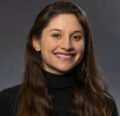
Juliana Garcia-Mejia (2023-2026)
Dr. Juliana García-Mejía (hOO – lee – AH – nuh, Gahr – see – ah, meh – HEE – ah) is a combined 51 Pegasi b and MIT Pappalardo postdoctoral fellow. She is broadly interested in developing novel astronomical instrumentation to enable the study of exoplanets, their atmospheres, and their low mass stellar hosts. Juliana is the PI of The Tierras Observatory, a new 1.3-m ultra-precise fully automated photometer located atop Mt. Hopkins, Arizona. Having spent her entire Ph.D. building Tierras, she is currently focused on using the facility to uncover temperate terrestrial planets, search for moons around exoplanets, and study their low mass stellar hosts. Juliana is also pursuing the design of a high throughput, extremely high resolution pathfinder spectrograph to enable narrow-wavelength atmospheric structure and velocity dynamic studies of exoplanets, and to expand cosmo chronological and magnetic field studies of stars of varied spectral types. In the future, this instrument could enable the detection of molecular oxygen in a terrestrial exoplanet atmosphere.
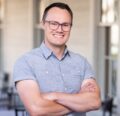
Benjamin Rackham (2019-present)
Benjamin received his PhD from the University of Arizona in 2018. He was a postdoctoral research associate at the University of Arizona before being awarded the 51 Pegasi b Postdoctoral Fellowship in Planetary Astronomy. Benjamin brought his fellowship to MIT in the fall of 2019 where he works with Professor Julien de Wit in MIT’s Department of Earth, Atmospheric and Planetary Sciences (EAPS) and as an MKI-affiliated postdoctoral fellow. He works on the detection and characterization of transiting exoplanets. He is interested primarily in small exoplanets around nearby small stars that afford the best opportunities for detailed atmospheric characterization, including searches for biosignatures with near-future telescopes. Starspots can mimic or mask atmospheric features in transmission spectra, and so Ben’s current work focuses on developing new approaches for constraining stellar photospheric heterogeneity and disentangling stellar and planetary signals in transmission spectra.
Past

Malena Rice (2022-2023)
Malena Rice is a 51 Pegasi b Fellow at the Massachusetts Institute of Technology, where her research focuses on planetary system dynamics. Originally from Simi Valley, California, she earned her Bachelor’s degrees in Physics and Astrophysics from UC Berkeley in 2017 and her M.S. (2020), M.Phil. (2020), and PhD (2022) in Astronomy at Yale University. Outside of her degree work, Malena has also conducted research at the NASA Goddard Space Flight Center and at the University College London. Malena is passionate about STEM education and accessibility, and she regularly leads both public outreach events and graduate-level teaching workshops. In her free time, she enjoys playing the flute and piano, visiting art galleries, reading, traveling, and spending time outdoors. Malena will be starting as an Assistant Professor in the Yale Astronomy Department in Summer 2023.
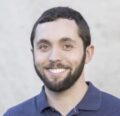
Jason Dittmann (2017-??)
Jason obtained a Ph.D. in Astronomy and Astrophysics from Harvard University in 2016. In 2017 Jason was selected to join the inaugural class of the 51 Pegasi b Fellowship Program in Planetary Astronomy. Jason brought his fellowship to MIT to work with Professor Sara Seager in MIT’s Department of Earth, Atmospheric and Planetary Sciences (EAPS) and as an MKI-affiliated postdoctoral fellow. Jason believes that forming a deep understanding of new worlds requires that we first understand their host stars. Through his work, Jason overcomes barriers to understanding nearby stars to better characterize their physical attributes and detect the new worlds orbiting them. His research focuses on small and cool stars, which are the most abundant type in the Milky Way Galaxy and often the best targets when searching for habitable exoplanets. Jason makes use of parallax techniques—applying multiple viewpoints to measure the distances to 1600 nearby stars, and then using these measurements to accurately determine the physical attributes of these stars and of the planets that may orbit them. He found that these small stars are similar in composition to our Sun, lending an important clue to what makes a star likely to have a planetary companion.
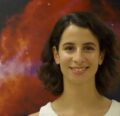
Clara Sousa-Silva (2019-2020)
Clara came to MIT in 2016 as a postdoctoral researcher to work with Professor Seager in MIT’s Department of Earth, Atmospheric and Planetary Sciences (EAPS). She was named a 51 Pegasi b Postdoctoral Fellow in 2019. Clara is a quantum astrochemist whose research focuses on exoplanet spectroscopy and its applications to astrobiology. She did her undergraduate and masters degrees at the University of Edinburgh. In 2011 she moved to London and joined the ExoMol project (University College London) as a PhD student under the supervision of Professor Jonathan Tennyson. Clara’s interests lie in the molecular characterization of extra-solar planets and making science a more inclusive world, particularly for girls. Clara’s ultimate goal is to find a habitable planet outside the Solar System by working with a large, inclusive and diverse team of scientists. For her part, Clara wants to understand alien atmospheres by developing a sophisticated understanding of the impact different molecules have on an atmosphere’s spectra. Clara left MIT in October 2020 and is currently a 51 Pegasi b Postdoctoral Fellow at the Center for Astrophysics at Harvard.
Established in 2021, the Brinson PrizeFellowship Program supports ambitious research in this area, with a focus on projects that complement and capitalize on the latest space science. This Fellowship Program is administered as a collaboration between The Brinson Foundation and the SpaceTelescope Science Institute.
Each Brinson Prize Fellowship offers a competitive salary and a generous annual research stipend. Funds may be used to support unique professional development opportunities, such as science communication training.
Current

Nathaniel Starkman (2024 - )
Nathaniel Starkman studies the dynamics of star clusters orbiting galaxies to understand the distribution and nature of dark matter. When an orbiting group of stars is torn apart by its host galaxy's gravity, the group's debris forms long structures called stellar streams that are exquisitely sensitive to the gravity of the galaxy. Since much of this gravity is sources by the dark matter, by studying stellar streams we can map the dark matter in a galaxy. As a PhD candidate at the University of Toronto, Starkman extended the detected lengths of stellar streams, developed cutting-edge machine learning algorithms to characterize and model stellar streams, and refined models of the dark matter in the milky Way. In addition, Starkman constrained models of exotic dark matter and found new ways to study the earliest light in the universe. As a Brinson Prize Fellow at the Massachusetts Institute of Technology, Startkman will extend his stellar stream research beyond the Milky Way to a cosmological context, characterizing stellar streams of distant galaxies to map their dark matter. Combining his cutting-edge methods with forthcoming datasets from Rubin Observatory, Starkman will map thousands of stellar streams and galactic dark matter distributions and test cosmological theories of the nature of dark matter and the formation of galaxies.

John Weaver (2025 - )
John Weaver studies how the first galaxies grew and assembled, setting the stage for the rest of cosmic history. He uses the largest telescopes to map out galaxies in space and time and then studies the most extreme among them with detailed spectroscopy. Weaver has led a number of high-profile galaxy catalog teams including COSMOS2020 and UNCOVER, as well as serving as the Principal Investigator of one of the deepest JWST spectroscopic surveys of early bright galaxies. As a Brinson Prize Fellow, his work will focus on ESA's Euclid Mission, a wide-field near-infrared telescope that is surveying vast regions of our Universe. He will identify the most luminous galaxies stretching back to the Big Bang with unprecedented statistical power, placing fundamentally new constraints on cosmological models. Unsatisfied with purely statistical insights, Weaver will use spectroscopy to identify the tell-tale signature of primordial stars and active black holes in these remarkable cosmic beasts.